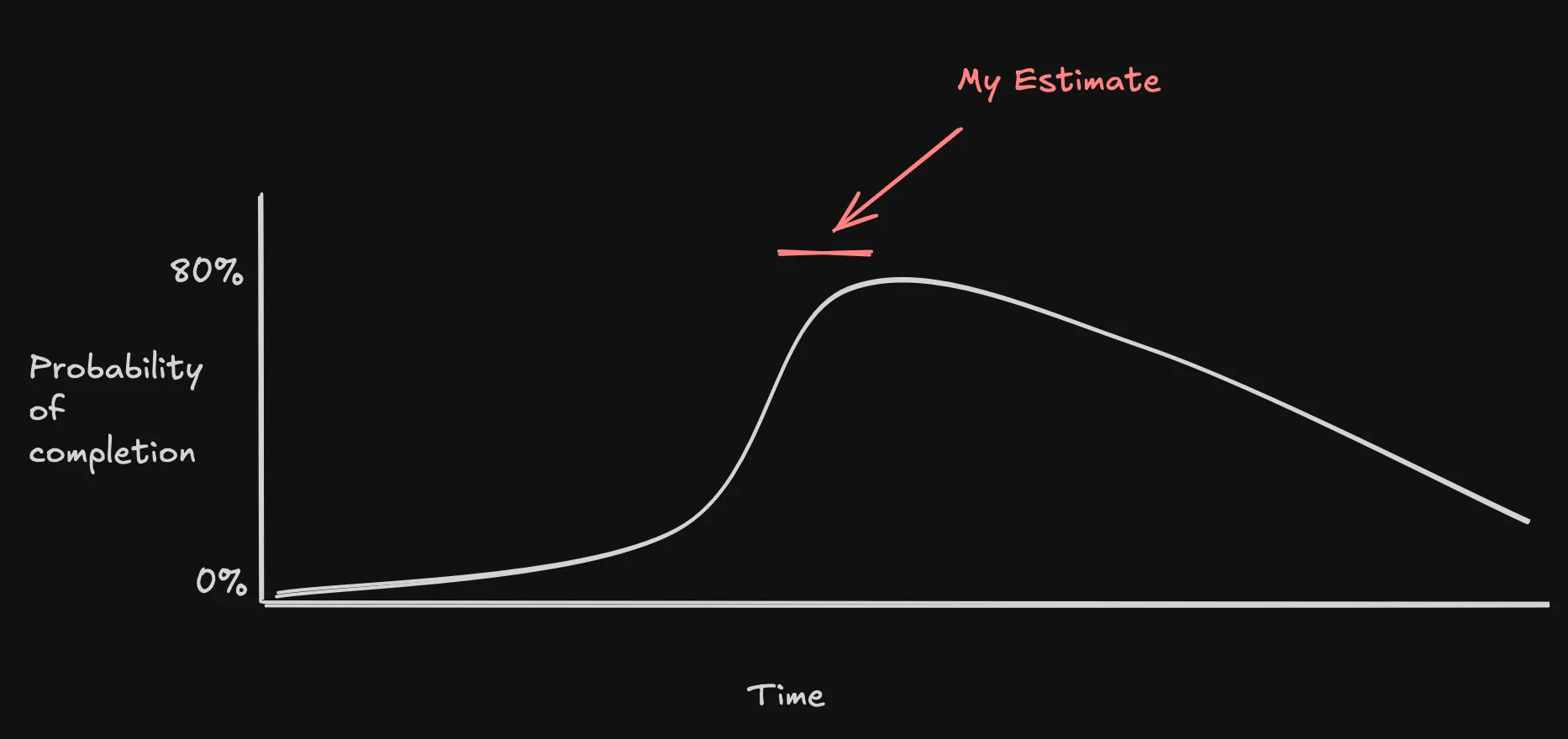When estimating the mind can go into three areas of importance we should examine in order, stopping at the first that will give a satisfactory result:
- Why do you want to know how long it will take? What is the action or decision this information will drive? Can I answer that question directly instead of providing an estimate?
- Are you genuinely curious about the probability distribution of how long different types of software can take based on risk and experience? I can provide that distribution curve (see below)
- Are you looking for a commitment date? If so, I’m guessing you already have one in mind, why don’t you just share it with me and we can work within that constraint. Picking this option gives up the ability to say what will be delivered.
1. What’s the real question?
Almost always someone is asking how long something will take because someone else asked them and they only want it because they’re a completionist when making some gantt chart. If there’s no good reason to have an estimate then never give one.
2. What’s the probability distribution
Sometimes you find someone genuinely interested in how one might guess at how long software will take. In this case it’s important to understand that time flows in one direction which creates an asymmetric probability distrubution for when things may get done:

For example, you’re never 50% early when taking a flight. You may rarely be a little early, but there’s far more time on the other side of the scheduled arrival and so far more flights are late than early or on time.
3. Commitment Date
This is the most common scenario and it’s also sadly mistaken. When business sets a commitment date they give up the “what” will be delivered. This can often be fine, engineers are great at working within constarints. However, when business asks, “when will X be delivered”, it’s a TRAP! What they’re trying to do is the impossible: to know both when and what will be delivered. In this case we need to be clear - we can agree on a date, or we can talk in depth about what we’ll deliver and about probability distributions, we cannot have both a commitment date and an agreement on deliverables.